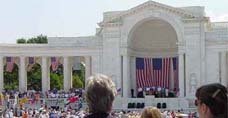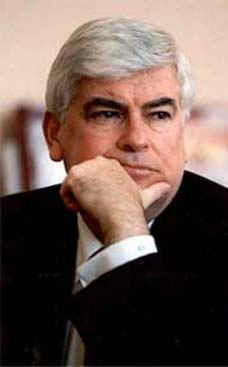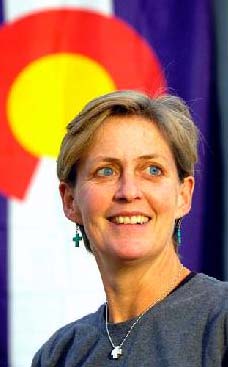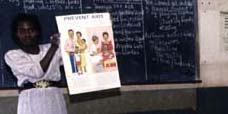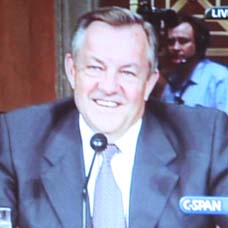2007.01.11: January 11, 2007: Headlines: Figures: COS - Colombia: Journalism: New York Times: Maureen Orth writes: Shopping for a Villa in Tuscany
Peace Corps Online:
Directory:
Colombia:
Special Report: Journalist and Colombia RPCV Maureen Orth:
February 9, 2005: Index: PCOL Exclusive: RPCV Maureen Orth (Colombia) :
2007.01.11: January 11, 2007: Headlines: Figures: COS - Colombia: Journalism: New York Times: Maureen Orth writes: Shopping for a Villa in Tuscany
Maureen Orth writes: Shopping for a Villa in Tuscany
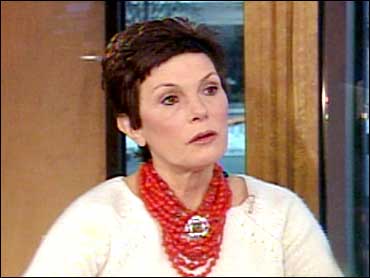
Mr. Phillips could afford to buy and renovate the borgo after decades as a public interest lawyer, during which he earned cuts of the considerable money that he helped recover for the California and federal governments from contractors accused of corruption. But he wondered whether he and his wife, Linda Douglass, then a correspondent for ABC News, really had a use for so many houses in the Italian countryside — even given their large extended family and network of friends. He decided that the borgo should double as a gathering place for “people associated with charitable and educational issues.” Its beauty and history could help inspire creative thought and dialogue, he hoped; it would be nice, he joked, “to have the Mideast peace talks here.” (He would charge for these gatherings, he said, but was not interested in making a profit; he has also considered renting the borgo out to select business groups to help finance the plan.) Journalist Maureen Orth served as a Peace Corps Volunteer in Colombia in the 1960's.
Maureen Orth writes: Shopping for a Villa in Tuscany
Shopping for a Villa, He Wound Up With a Village
By MAUREEN ORTH
Published: January 11, 2007
[Excerpt]
JOHN PHILLIPS spent more than two years looking for a villa in Italy before he saw Borgo Finocchieto near this town in Tuscany. He had always imagined having a place in Italy — his original family name was Filippi, and he had fallen hard for the country in 1969, after a lonely tour of Eastern Europe. What he had never imagined, until that day in the fall of 2000, was that that place would be a village.
A tiny medieval farming town, Borgo Finocchieto (the name means village of fennel fields) was little more than ruins and piles of dirt when he first came here. He had been sent by a friend proposing a joint purchase: Mr. Phillips, a Washington lawyer, would buy the main house and the friend and two others would buy the rest. The borgo’s five acres and five dilapidated structures were part of an estate once owned by the Borghese family, and overlooked a valley of hills and vineyards. Mr. Phillips said he was instantly struck by the view, uninterrupted and virtually unchanged for 1,000 years, and by the silence: the site was the quietest he had visited in Italy.
The borgo, which appears on a map from 1318, is about 40 miles south of Siena, close to the ancient Florence-Rome road used by Chaucer and Michelangelo. It was farmed by peasants and sharecroppers. As late as the 1960s, 21 families shared the borgo’s large U-shaped manor house, living on the second floor without indoor plumbing and keeping their livestock sheltered beneath them on the ground level. When Mr. Phillips saw it, the village’s onetime chapel had become a barn, and an ugly tractor shed blighted the view of the countryside.
Mr. Phillips decided the borgo should be brought back to life as a single entity, and in 2001 he bought it himself in what he called “a moment of irrational exuberance.”
Mr. Phillips, now 64, could afford to buy and renovate the borgo after decades as a public interest lawyer, during which he earned cuts of the considerable money that he helped recover for the California and federal governments from contractors accused of corruption. But he wondered whether he and his wife, Linda Douglass, then a correspondent for ABC News, really had a use for so many houses in the Italian countryside — even given their large extended family and network of friends. He decided that the borgo should double as a gathering place for “people associated with charitable and educational issues.” Its beauty and history could help inspire creative thought and dialogue, he hoped; it would be nice, he joked, “to have the Mideast peace talks here.” (He would charge for these gatherings, he said, but was not interested in making a profit; he has also considered renting the borgo out to select business groups to help finance the plan.)
Read the rest of the story here.
Links to Related Topics (Tags):
Headlines: January, 2007; RPCV Maureen Orth (Colombia); Figures; Peace Corps Colombia; Directory of Colombia RPCVs; Messages and Announcements for Colombia RPCVs; Journalism
When this story was posted in January 2007, this was on the front page of PCOL:





Peace Corps Online The Independent News Forum serving Returned Peace Corps Volunteers
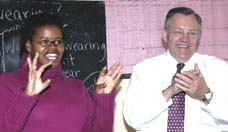 | Ron Tschetter in Morocco and Jordan
On his first official trip since being confirmed as Peace Corps Director, Ron Tschetter (shown at left with PCV Tia Tucker) is on a ten day trip to Morocco and Jordan. Traveling with his wife (Both are RPCVs.), Tschetter met with volunteers in Morocco working in environment, youth development, health, and small business development. He began his trip to Jordan by meeting with His Majesty King Abdullah II and Her Majesty Queen Rania Al Abdullah and discussed expanding the program there in the near future. |
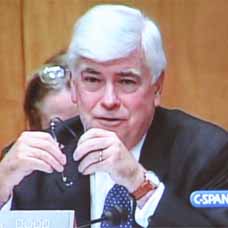 | Chris Dodd's Vision for the Peace Corps
Senator Chris Dodd (RPCV Dominican Republic) spoke at the ceremony for this year's Shriver Award and elaborated on issues he raised at Ron Tschetter's hearings. Dodd plans to introduce legislation that may include: setting aside a portion of Peace Corps' budget as seed money for demonstration projects and third goal activities (after adjusting the annual budget upward to accommodate the added expense), more volunteer input into Peace Corps operations, removing medical, healthcare and tax impediments that discourage older volunteers, providing more transparency in the medical screening and appeals process, a more comprehensive health safety net for recently-returned volunteers, and authorizing volunteers to accept, under certain circumstances, private donations to support their development projects. He plans to circulate draft legislation for review to members of the Peace Corps community and welcomes RPCV comments. |
 | He served with honor
One year ago, Staff Sgt. Robert J. Paul (RPCV Kenya) carried on an ongoing dialog on this website on the military and the peace corps and his role as a member of a Civil Affairs Team in Iraq and Afghanistan. We have just received a report that Sargeant Paul has been killed by a car bomb in Kabul. Words cannot express our feeling of loss for this tremendous injury to the entire RPCV community. Most of us didn't know him personally but we knew him from his words. Our thoughts go out to his family and friends. He was one of ours and he served with honor. |
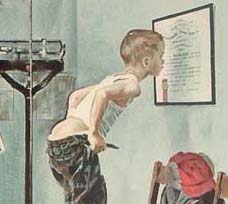 | Peace Corps' Screening and Medical Clearance
The purpose of Peace Corps' screening and medical clearance process is to ensure safe accommodation for applicants and minimize undue risk exposure for volunteers to allow PCVS to complete their service without compromising their entry health status. To further these goals, PCOL has obtained a copy of the Peace Corps Screening Guidelines Manual through the Freedom of Information Act (FOIA) and has posted it in the "Peace Corps Library." Applicants and Medical Professionals (especially those who have already served as volunteers) are urged to review the guidelines and leave their comments and suggestions. Then read the story of one RPCV's journey through medical screening and his suggestions for changes to the process. |
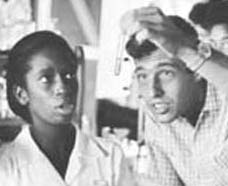 | The Peace Corps is "fashionable" again
The LA Times says that "the Peace Corps is booming again and "It's hard to know exactly what's behind the resurgence." PCOL Comment: Since the founding of the Peace Corps 45 years ago, Americans have answered Kennedy's call: "Ask not what your country can do for you--ask what you can do for your country. My fellow citizens of the world: ask not what America will do for you, but what together we can do for the freedom of man." Over 182,000 have served. Another 200,000 have applied and been unable to serve because of lack of Congressional funding. The Peace Corps has never gone out of fashion. It's Congress that hasn't been keeping pace. |
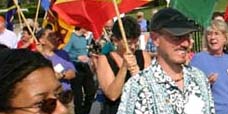 | PCOL readership increases 100%
Monthly readership on "Peace Corps Online" has increased in the past twelve months to 350,000 visitors - over eleven thousand every day - a 100% increase since this time last year. Thanks again, RPCVs and Friends of the Peace Corps, for making PCOL your source of information for the Peace Corps community. And thanks for supporting the Peace Corps Library and History of the Peace Corps. Stay tuned, the best is yet to come. |
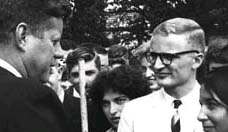 | History of the Peace Corps
PCOL is proud to announce that Phase One of the "History of the Peace Corps" is now available online. This installment includes over 5,000 pages of primary source documents from the archives of the Peace Corps including every issue of "Peace Corps News," "Peace Corps Times," "Peace Corps Volunteer," "Action Update," and every annual report of the Peace Corps to Congress since 1961. "Ask Not" is an ongoing project. Read how you can help. |
Read the stories and leave your comments.

Some postings on Peace Corps Online are provided to the individual members of this group without permission of the copyright owner for the non-profit purposes of criticism, comment, education, scholarship, and research under the "Fair Use" provisions of U.S. Government copyright laws and they may not be distributed further without permission of the copyright owner. Peace Corps Online does not vouch for the accuracy of the content of the postings, which is the sole responsibility of the copyright holder.
Story Source: New York Times
This story has been posted in the following forums: : Headlines; Figures; COS - Colombia; Journalism
PCOL35888
01

